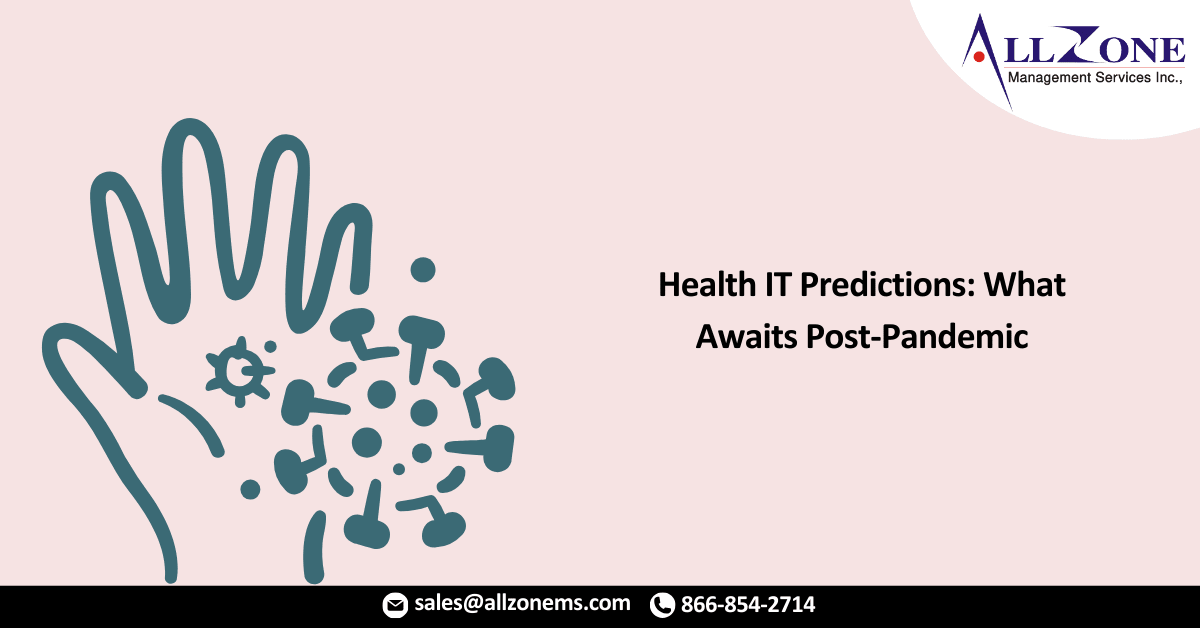One year ago, it’s doubtful that anyone could have accurately predicted the changes that would occur in healthcare in 2020. While facing the world’s greatest health crisis in living memory, we’ve seen amazing shifts in adapted care delivery and a surge in “telemedicine,” as well as implementation, regulation, coding, and payment adjustments established at great speed to facilitate use. We’ve seen unprecedented innovation in virus testing and treatment capability and protocols, and impressively rapid development of experimental vaccines— some using revolutionary mRNA technology. We’ve also seen unprecedented strain on healthcare supply chain, infrastructure, and staff.
While 2021 will surely hold its own surprises, there are some likely developments in healthcare on the horizon and many of them center on healthcare IT:
Sharable Data
The need for a nationally and globally recognized record of COVID-19 immunization will produce a mini digital health record with critical and essential health information that may include blood type, medical conditions, critical medications, allergies, disabilities, and relevant demographic data.
Compiling, accessing, managing, and sharing these emergent mini digital health records may usher in greater use of new standardized authorizations such as biometrics (fingerprints, for example)—instead of relying on siloed government identification mechanisms, numbering, or documentation.
Patient Data Privacy
The increased need for the mini digital health records will raise concerns over what data can be shared, by whom, and whether any tracking or geo-location data can be provided to government and healthcare authorities globally. New policies and revisions to policies will be made at the country-level and debated, then hopefully agreed upon at the global level in the interest of public health.
Cloud Computing
Cloud computing will get significantly cheaper—on the order of 30-40%—due to increased automation, increased use of high-performing, low-power chips for average workloads, and the growth of compute competition at the edge and device level. Healthcare IT using cloud computing will see even greater market advantages that help drive growth in cloud adoption.
There will also be significant growth in the number of cloud-based healthcare apps and many current healthcare apps will fail as they fall by the wayside. Sadly, it’s also likely that a number of cloud-based healthcare app providers will experience a cybersecurity attack that results in a major service disruption and very likely a data breach.
AI in Healthcare
Growing concern over the ethics of Artificial Intelligence (AI) overall, and particularly in healthcare, will spark greater interest in the “Safe” AI movement. There will be significant increases in public awareness of patient data privacy needs, especially where massive amounts of data are used without patient permission for AI development.
Concurrently, there will be at least one significant new breakthrough in AI for healthcare, most likely in the area of imaging diagnostics where AI will be seen as adding unique value to current capabilities.
Medical Devices
Devices for biometric identification of patients and healthcare professionals will advance significantly with the need for sharable mini health records and expansion of contactless identification solutions.
The growing cadre of Software as a Medical Device (SaMD) deployments will be deeply scrutinized by regulators, physicians, and patient groups for safety and efficacy. It’s likely that at least one SaMD will experience a safety incident that informs policy and regulation.
The number of healthcare Internet of Things (IoT) solutions will grow dramatically. Providers will pursue ways to find and consolidate IoT data related to Remote Patient Monitoring and integrate or translate it into Electronic Health Records (EHRs). Increased deployments will attract cybersecurity attacks that exploit new vulnerabilities in many healthcare IoT applications.
Patient at Home
Patients will increasingly seek options to receive care and treatments at or near home and become extremely conscious about price as the economy struggles to rebound from pandemic upheavals.
Retail pharmacies with home delivery services will grow significantly. Low-cost procedure-based clinics and service providers will grow and compete for local patient populations, driving fees down.
Home health services will also grow significantly. There will be a shortage of home healthcare workers that drives the need for a more sophisticated solutions to match needs with skill sets available by location.
All of which will require streamlined healthcare IT infrastructure for support.
Caregiver Burn-Out
Physicians and healthcare professionals exhausted by both COVID-19 surges and impending floods of delayed non-urgent procedures expected in 2021 will produce a backlash. Strikes and subsequent negotiations for better working conditions, more paid time off, and mental/emotional health support services are probable.
There will be a higher than usual rate of healthcare professionals who retire or change professions in 2021 due to burn-out, and a greater than usual demand for innovation to help manage the disruption. Augmenting and managing the changing workforce along with workflow automation will be especially in demand.
Hopefully, employment and educational programs for healthcare professionals will be revamped around the remediation of workload fatigue, improved teamwork/interaction, expanded mental and emotional services — and the tools that help enable them.
For More Information: health it predictions for 2021 what awaits post pandemic

